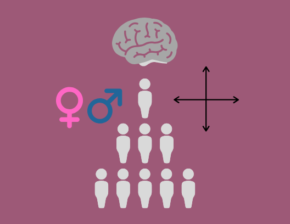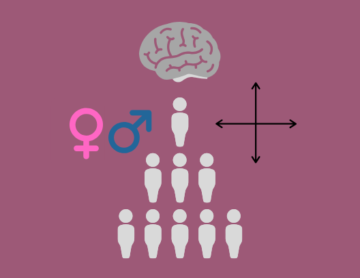This may come as a shock, but did you know all workplaces are biased? Within any group of people, there will be different degrees of concealed or unconscious bias, even if there is no immediate outward signs of prejudice or unfairness, which contribute to workplace bias.
Our brains have a habit of making incredibly quick assessments and judgements about people or situations, without us realising it. Human brains are hardwired to make unconscious decisions all the time. Otherwise, people would be overwhelmed if they had to consciously evaluate every response to every stimulus they received in a day.
In fact, research shows we instinctively categorise people, not just by physical differences such as age, physical disability, ethnicity, or gender, but less obvious cues such as educational level, sexuality, social status and even job title! Although this provides efficient shortcuts to allow the more efficient use of brain capacity, it also leads us to make assumptions and rely on stereotypes, even if we don’t consciously believe them.
No matter now unbiased we think we are, it’s easy to have subconscious negative opinions about people, particularly if they come from outside our usual group, or if we haven’t had experience of certain people doing certain jobs, or carrying out different functions.
As an HR Consultant, I’m often asked to help resolve staffing issues and frequently find the root of problems stem from misunderstanding between different people and a lack of tolerance of those differences.
So, what can you do to tackle workplace bias?
It’s not about telling everyone to just stop being biased, but it is about helping to raise awareness of people’s own unconscious bias, so they can choose what they are going to do about it.
Here are FOUR practical ways to help you and your employees become more aware of unconscious bias and some ideas and resources to help you reduce workplace bias:
1. Find out more about yourself
Take time to really think about your background, personal life, experiences and the culture you come from. Ask yourself: to what degree have these influenced my thoughts, beliefs and attitudes?
If you want to study your unconscious bias in more detail, you can even try an online test such as the Implicit Association Test
2. Immerse yourself in more diversity
Actively seek out new experiences, visit new places and mix with different people to broaden your horizons and expose yourself to different views and opinions.
3. Treat people as individuals
Focus in and find out more about work colleagues, customers and suppliers, using active listening skills, to lessen your reliance on stereotypes and assumptions.
Brush up on active listening skills by watching: Julian Treasure’s 5 Ways to Listen Better (TED Talk)
4. Challenge the Gut Feel
Check that your decision making stands up to scrutiny by mentally flipping an individual with a different characteristic and making sure it feels right.
Learn how to ‘Flip it to Test it’ by watching: Kristen Pressner’s Are you Biased? I am (TED Talk)
Although our brains are hardwired to make unconscious decisions all the time, they are NOT hardwired to be biased. We learn bias at a very young age, but this means we can all reprogram and change our brains.
Choose just ONE of the above ideas and use it to help tune into your own unconscious bias, then decide what you are going to do about it. Sharing this with your employees would be a good first step!


